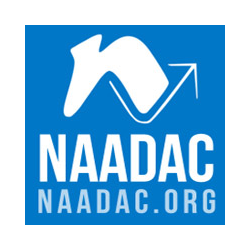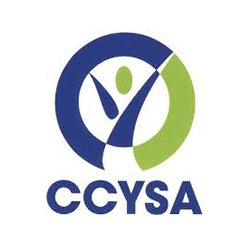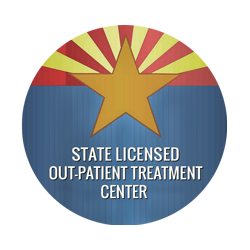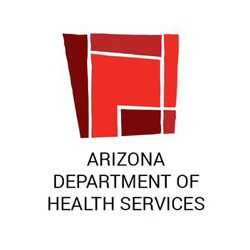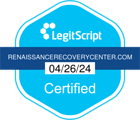When we hear the phrase “prescription drug abuse,” most of us think about opiates, benzodiazepines, and amphetamines. Barbiturates, however, are another type of prescription medication that carries a high risk for abuse, and many underestimate just how dangerous dependence on or abuse of barbiturates can be. Here is an in-depth look at barbiturates and what barbiturate abuse looks like.
Click to jump to section:
- What Is Barbiturates?
- History of Barbiturates
- Risk of Barbiturates Abuse
- Street Names for Barbiturates
- Signs and Symptoms of Recent Barbiturate Use
- Barbiturates Drug Addiction
- Barbiturates Addiction Symptoms
- Side Effects of Barbiturates
- Barbiturates Addiction Issues
- Barbiturates Addiction Treatment
- Top Recovery Center to Treat Barbiturate Drug Addiction
Barbiturates Defined
Barbiturates fall under the class of sedative-hypnotics drugs, meaning they are central nervous system depressants that have sleep-inducing and anxiety-reducing properties. These drugs have been commonly prescribed to treat headaches, anxiety, insomnia, and seizure disorders. Some common examples of barbiturates are amobarbital (Amytal), butabarbital (Butisol), pentobarbital (Nembutal), and secobarbital (Seconal).
History of Use
Barbiturates became a popular treatment option in medicine in the 1960s and 1970s, and consequently this is when rates of barbiturate abuse rose significantly as well. During this period, many used barbiturates recreationally to help ease inhibitions, decrease anxiety, and treat unwanted side effects of other illicit drugs. Recreational users often turned to barbiturates for feelings of relaxed contentment and euphoria as well.
Since the 1970s, rates of barbiturate use and abuse have actually been on the decline. This is because a safer, though still very much addictive, group of sedative-hypnotics called benzodiazepines (benzos) has largely replaced the use of barbiturates in medicine. Barbiturates, however, are still used in some applications, such as to control seizures in certain disorders or to relieve anxiety and tension before surgery.
Risk of Abuse
Barbiturates can be extremely dangerous because it is highly difficult to determine their proper dosage, and even a slight overdose can result in coma or death. The difference between a dose causing drowsing death can be very small (one major reason that barbiturates are not as frequently prescribed today). Barbiturates are also highly addictive, both physically and psychologically, and can cause life-threatening withdrawal symptoms. And while since the 1970s barbiturate abuse has largely been on the decline, recent high school surveys indicate that barbiturate abuse could be seeing a rise in these past decade. This could be because young users are seeking to counteract symptoms of alertness and excitement from other drugs like cocaine and methamphetamines. Young users are also much less familiar with stories of death and dangerous effects of barbiturates from the 1970s, meaning that they largely underestimate the dangers associated with barbiturates. Barbiturates carry many of the same “downer” effects as alcohol, and combining them with alcohol can be lethal.
Are you one of the many struggling with Barbiturates drug addiction? If so, contact us for all types of substance abuse including Barbiturates addiction.
Street Names for Barbiturates
There are many street names for the various barbiturate drugs. Just some of the most common names include downers, barbs, goofballs, pinks, Christmas trees, blues, yellow jackets, blue heavens, reds, blockbusters, rainbows, red devils, and sleepers, among others.
Signs and Symptoms of Recent Barbiturate Use
|
Drowsiness |
Decreased blood pressure |
Irritability or mood changes |
|
Slurring speech |
Falling or having accidents | Nausea or vomiting |
|
Poor coordination |
Unsteadiness, clumsiness | Sleep difficulties |
|
Difficulty concentrating or thinking clearly |
Dizziness, lightheadedness, or feeling faint | Unusual excitement |
|
Memory issues |
A sense of "hangover" | Confusion |
|
Involuntary eye movement |
Nervousness or anxiety | Depression |
|
Loss of inhibition |
Headache | Other side effects |
|
Slowed breathing |
Constipation |
Barbiturates Drug Addiction
Even when using properly prescribed therapeutic doses, the user will likely develop tolerance and, ultimately, a dependence on a barbiturate drug. The intoxicating and sedative effects diminish as tolerance increases. However, the lethal level of dosage does not increase as the tolerance level increases. Consequently, acute barbiturate poisoning can happen at any point during continued intoxication when the lethal threshold is reached.
Barbiturates Addiction Symptoms
Some signs of physical or mental dependence on barbiturates include an intense desire or sense of need to keep taking the medication and/or a sense of need to increase the dosage to keep receiving the same level of effects from it. Withdrawal symptoms when attempting to stop using the drug are another clear indicator of addiction. Withdrawal symptoms can include one or more of these:
- Anxiety
- Restlessness
- Nausea or vomiting
- Abdominal cramping
- Feeling faint
- Trembling hands
- Trouble sleeping
- Convulsions (seizures)
- Delirium
Side Effects of Barbiturates
Along with the needed and/or desired effects of using barbiturates, there may be one or more unwanted effects. Some of these symptoms may signal a need for prompt medical attention. Talk with your doctor immediately if you experience one or more of the following short-term or long-term side effects of using a barbiturate drug:
|
Chest pain or tightness |
Confusion | Muscle weakness |
|
Fever |
Depression | Bleeding sores on lips |
|
Muscle pain |
Over-excitement | Ulcers or white spots in the mouth |
|
Red or scaly skin |
Bruising or bleeding | Weight loss (unusual) |
|
Hives or skin rash |
Tiredness | Yellowing skin or eyes |
|
Sore throat |
Pain, aching, or tenderness of bones | Hallucinations |
|
Swollen face, eyelids, or lips |
Joint pain | |
|
Wheezing |
Appetite loss |
Barbiturates Addiction Issues
If you have been taking a barbiturate in high dosages or for an extended period, it can take around 15 days to become adjusted to living without having the drug in your body. Talk with your doctor if you experience any troubling withdrawal effects. (Those effects typically occur within the first 8 to 16 hours after the barbiturate use is discontinued.)
Abruptly stopping the use of barbiturates can cause serious symptoms, such as some of those listed above, and it can be fatal. As many as 75% of people may have seizures and up to 66% may experience delirium for up to several days. Delirium can include disorientation and visual hallucinations. Anxiety, agitation, and hyperthermia can occur. These complications can lead to exhaustion, or even cardiovascular collapse and death. Such outcomes are not inevitable; symptoms often disappear after 8 days or more.
Barbiturates Addiction Treatment
Treatment programs for barbiturate addiction normally involve a comprehensive treatment team of professional specialists. The team is likely to include various specialized counselors, doctors, nurses, psychiatrists, psychologists, social workers, and/or other professionals.
A thorough assessment also helps rehab professionals work most effectively with individuals to design the most effective drug treatment plan. The assessment begins before admission and continues throughout treatment. Your assessment includes discovering ways to provide help, as needed, for issues related to:
- Medical history and current issues and medications
- Effects of barbiturates on your life
- Mental health or behavioral issues
- Financial and/or legal problems
- Current home environment
- Family and/or social problems and needs
- Cultural issues related to drug and/or alcohol abuse
- Employment history and needs
- Educational needs and background
- School performance, if relevant
- Previous attempts to stop using barbiturates
Detoxification: Medically assisted withdrawal from barbiturates can be done for you in a specialized detox help facility or a regular medical unit of a hospital, or even in an outpatient setting with close supervision by a qualified medical professional. Detox typically takes from several days to a week or longer.
Types of rehabilitative treatment programs include:
- Inpatient treatment
- Residential programs
- Partial hospitalization or day treatment
- Intensive outpatient
- Outpatient programs
Intensive Outpatient Treatment: With outpatient rehab program type, treatment is often for 4 to 8 hours each day, and the individual lives at home. These programs can be expected to last for a minimum of about 3 months. This treatment option tends to work best for individuals whose home environment is stable and supportive.
Outpatient Programs: The outpatient programs provide treatment at the treatment facility, and the client lives at home. Meetings are usually in the evenings and on weekends, making it possible for participants to continue working or attending school. Treatment may be from about 9 to 20 hours of various activities each week. Some types of programs may require attendance every day, or just 1 to 3 times each week. These programs can be expected to last between 2 to 12 months.
Individual Counseling: Either an inpatient or outpatient drug treatment program can be expected to include individual counseling for help with many needs. These can include behavioral change, development of life skills, employment skills, and communication skills. There is also counseling for stress management and money management. Other counseling types can include repairing damaged relationships with family, friends, and others, building new friendships with people who do not use drugs, and creating a lifestyle that is conducive to sustained recovery.
Group Counseling: In group therapy, the group members are encouraged to support each other and try to help each other in coping with triggers that once led to drug abuse. People talk about their experiences, issues, and feelings, and have regular opportunities to talk with and share ideas with people who have similar problems.
Contact the Top Recovery Center to Treat Barbiturate Drug Addiction
Renaissance Recovery Center provides among the most effective customized methods of treatment for barbiturate drug addiction Arizona has to offer. We work with each of our clients to remove the pain, isolation, and sense of shame that may accompany barbiturate abuse. We work on the underlying issues that have led people to drug dependence and work to bring people to a new meaningful life beyond addiction.
